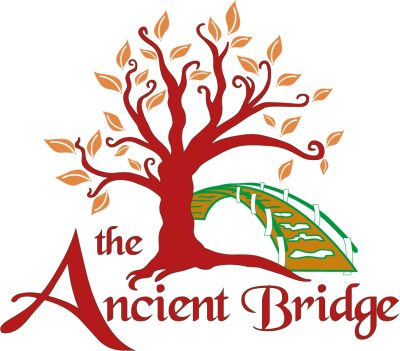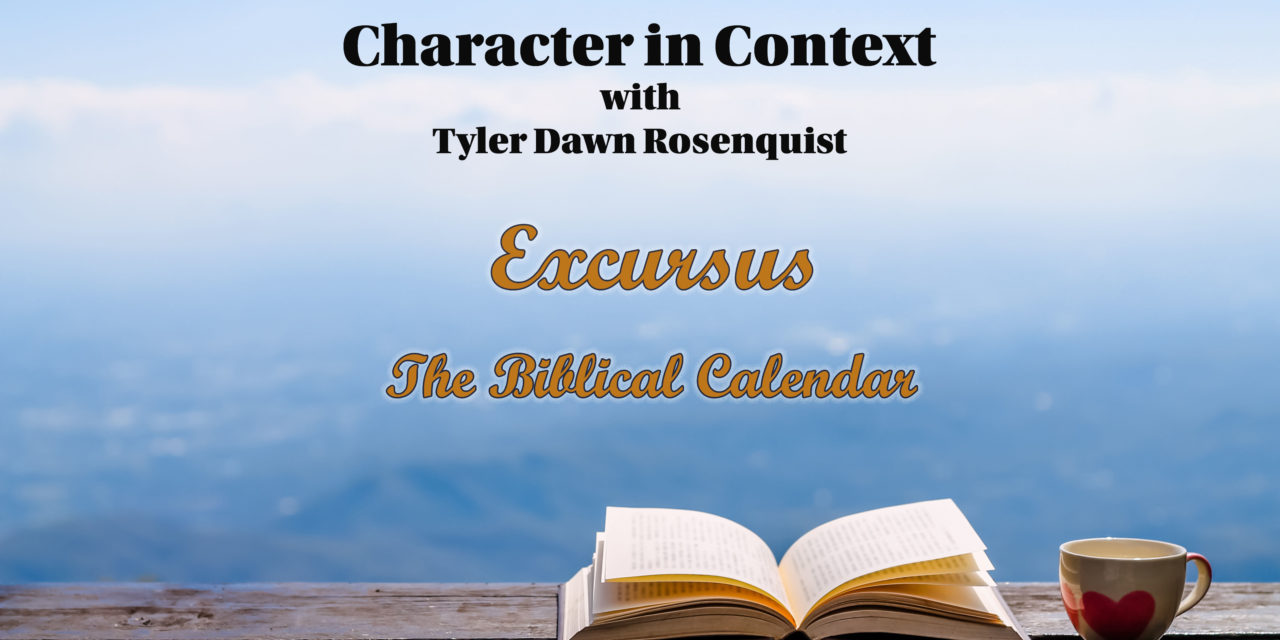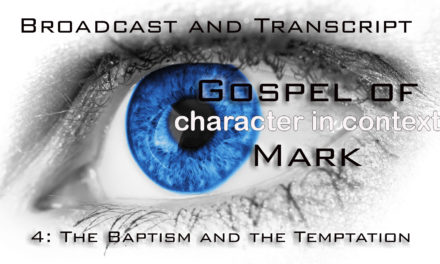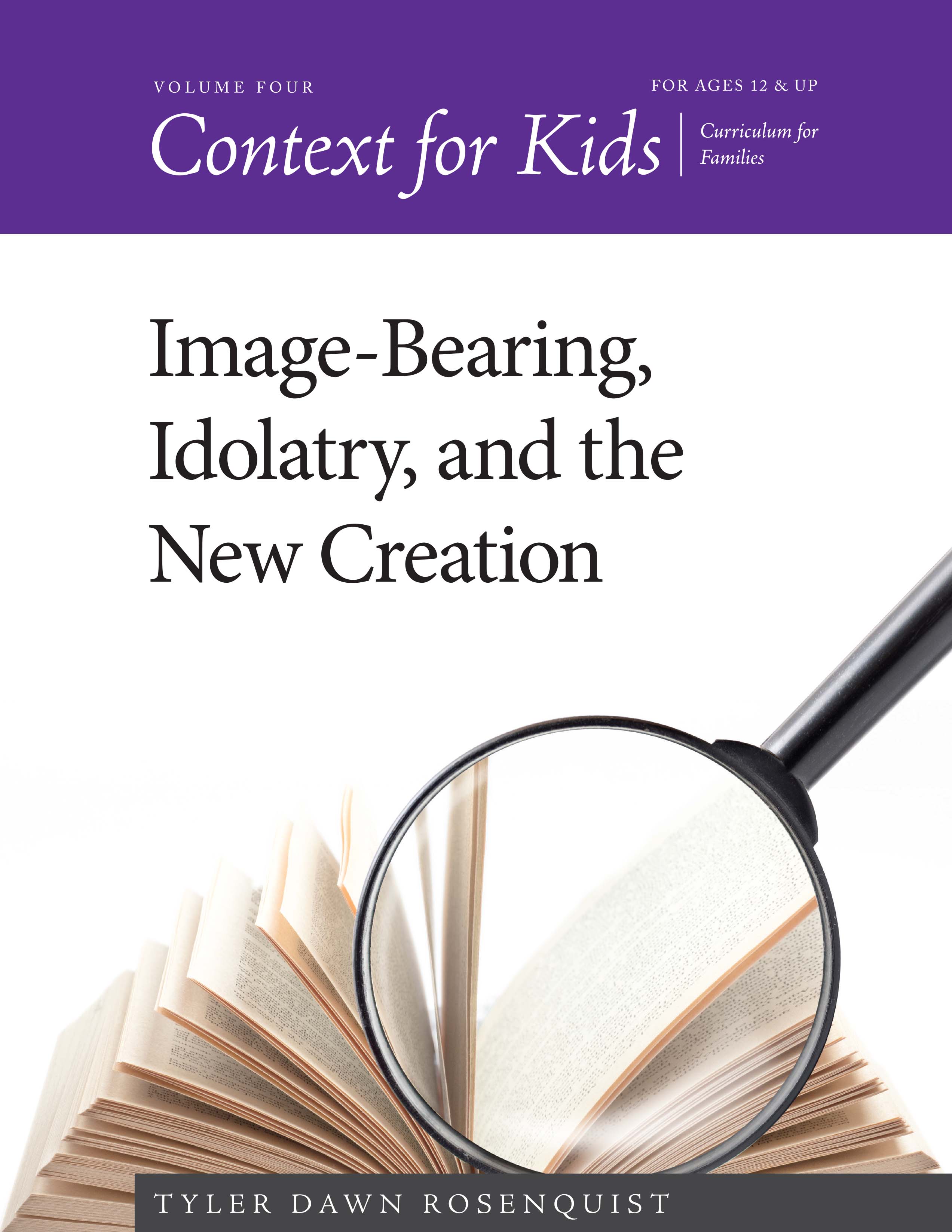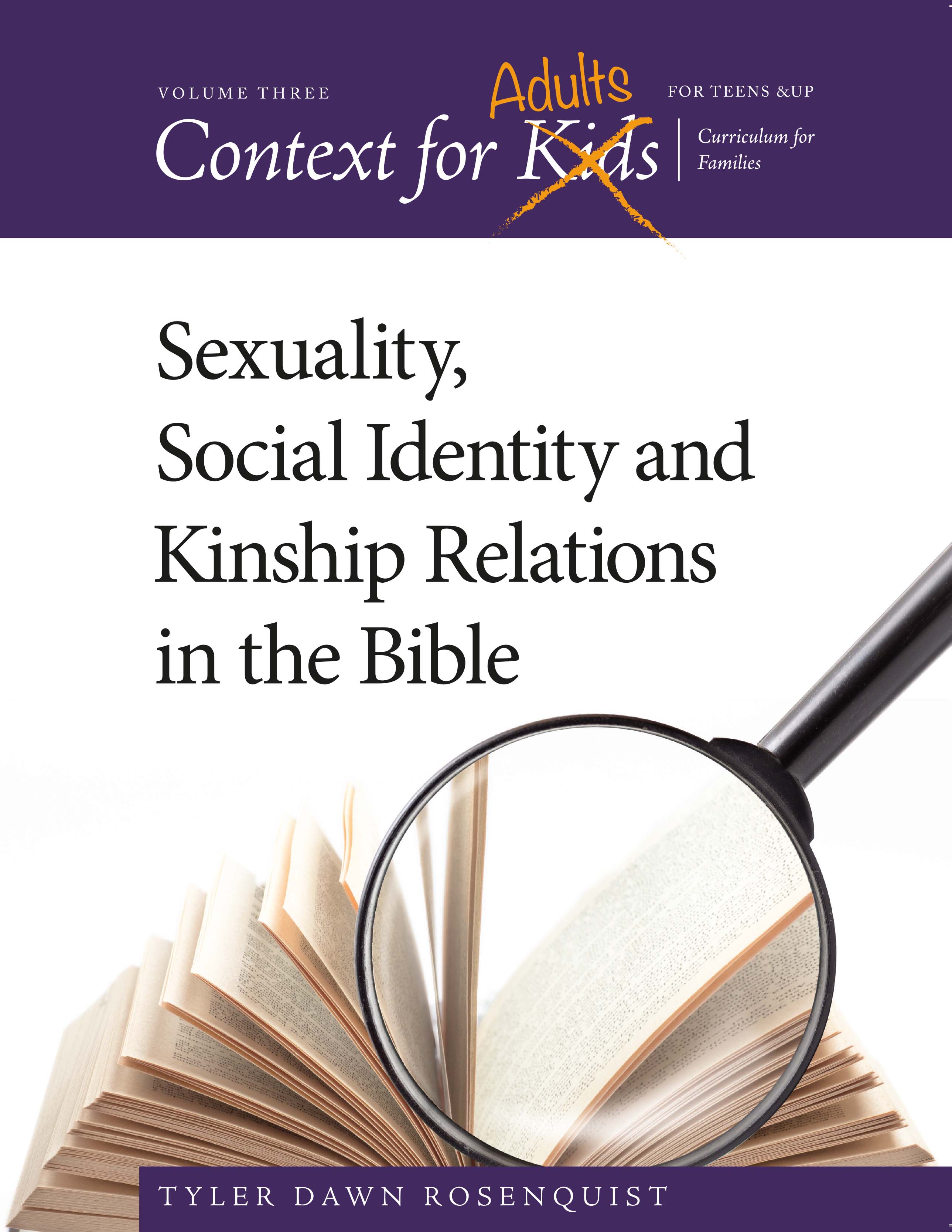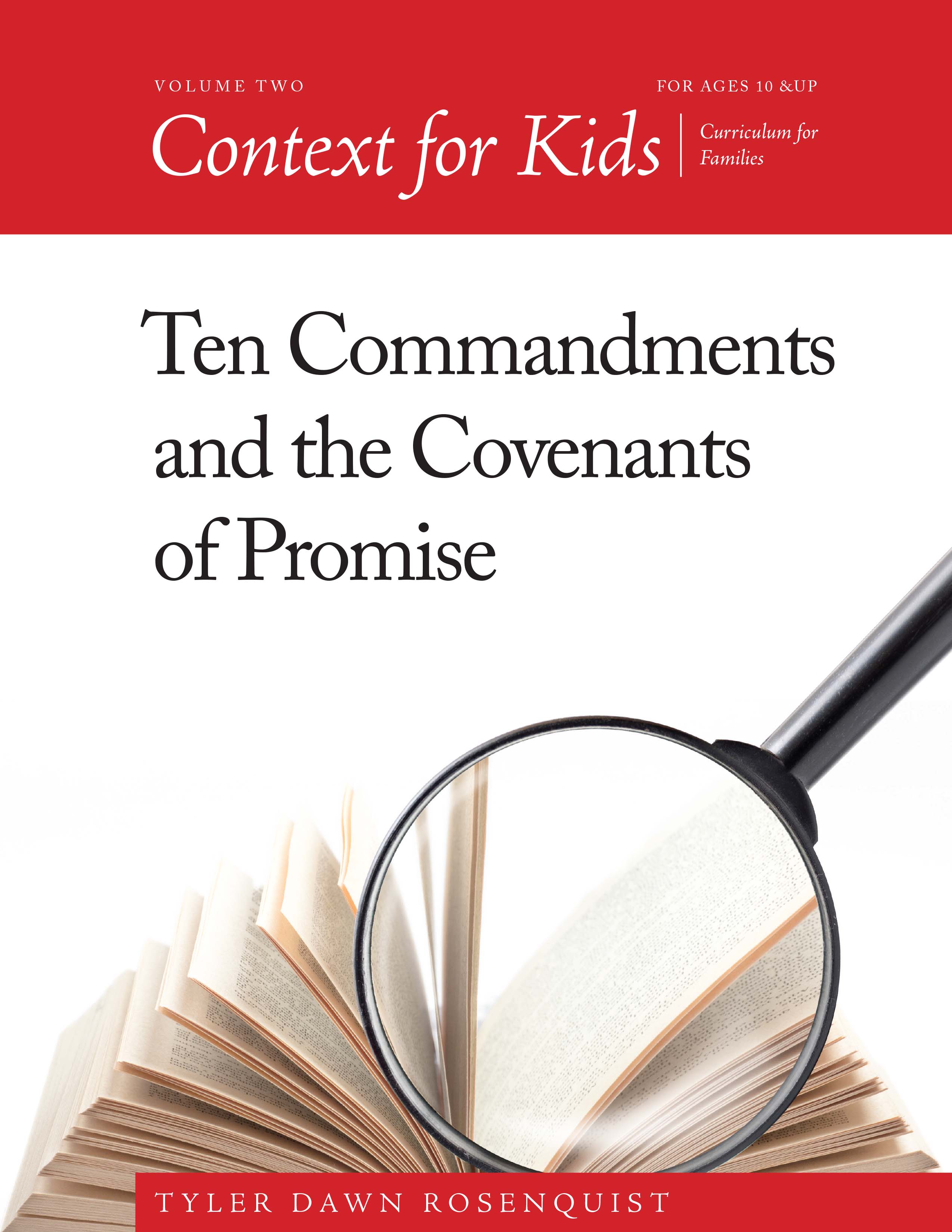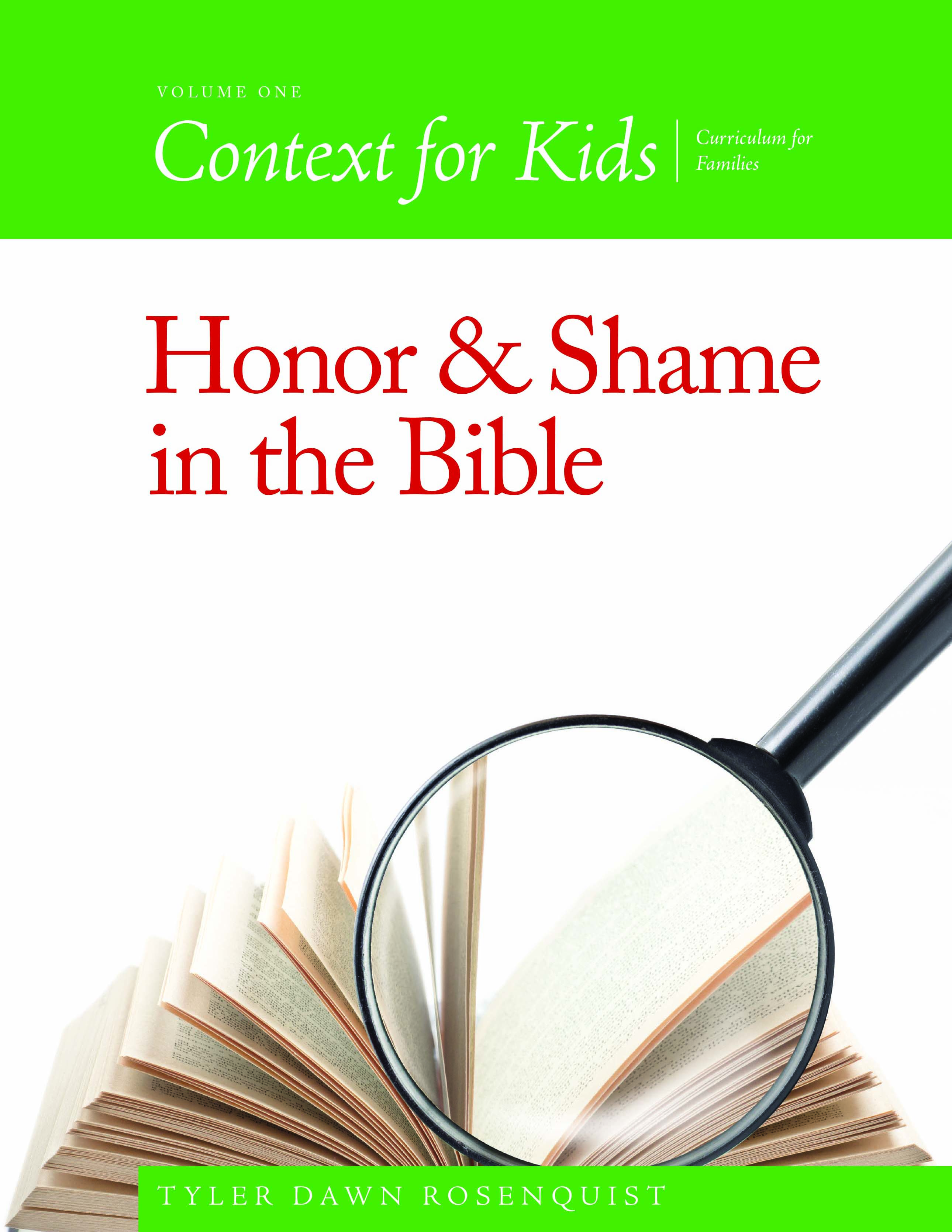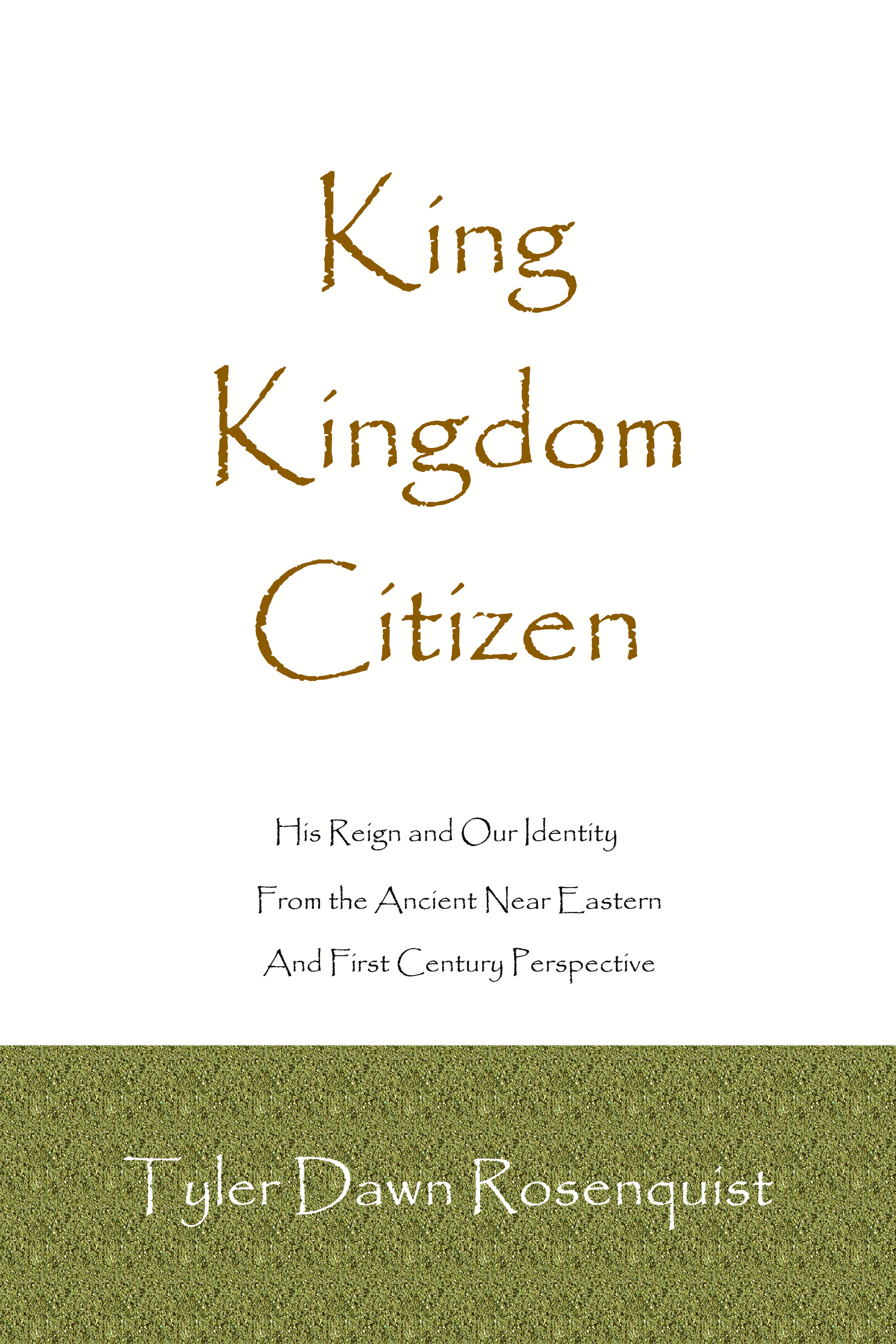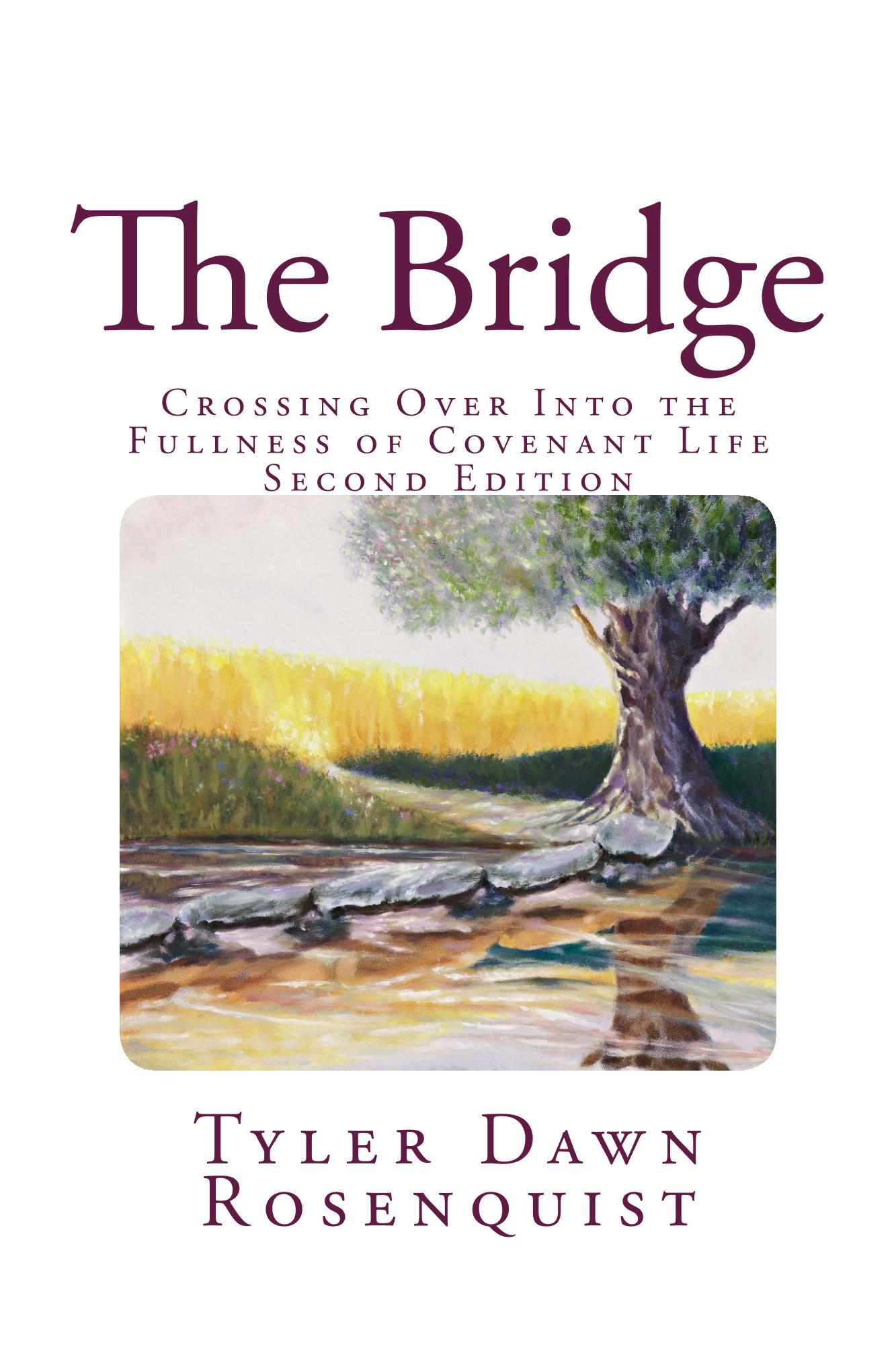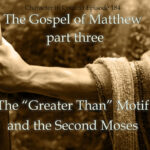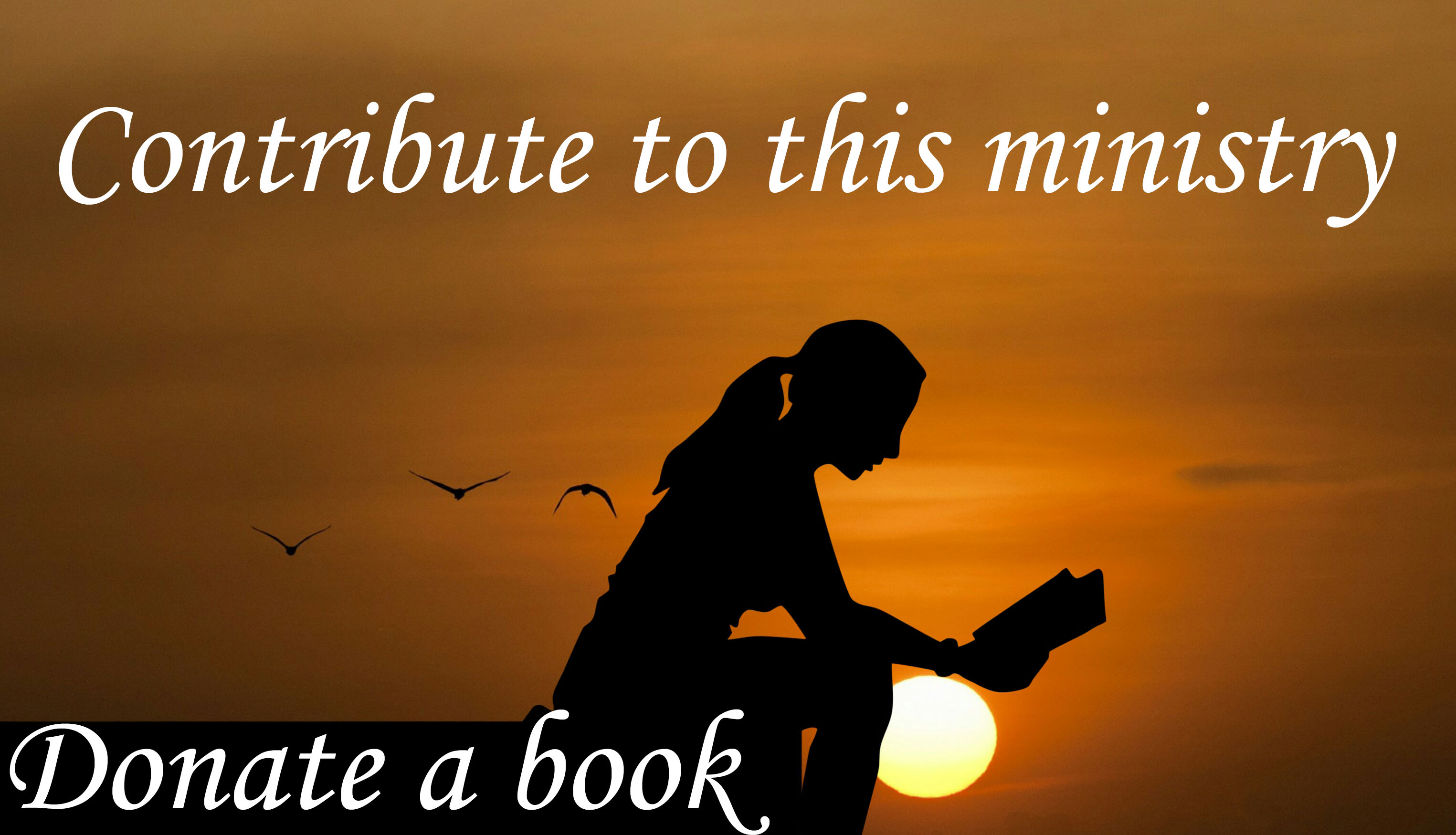I was writing out Mark part 61 concerning the Passover, and about two pages in, I realized that not everyone would be familiar with the Biblical calendar so we’ll be covering that today. We’ll be covering all four Biblical new years mentioned in Scripture but with a special emphasis, obviously, on the festival calendar because—you know, Passover is the subject of the final three chapters in Mark. These will no longer be airing on HNR because I just can’t keep up with both shows nonstop and have decided to air only Context for Kids on HNR. Coming up with an hour and a half of material every week is just way too much and the kid’s show is more important to me. But, my old time slot has been given to a great friend Lee Miller–check him out! He’s a great teacher!
If you can’t see the podcast player, click here.
(The first five minutes of the podcast are spent talking about my medical issues over the past five months/twenty-five years and why I have been gone) So, I was writing up part 61 of the Gospel of Mark series which begins “It was now two days before the Passover and the Feast of Unleavened Bread” and as I was writing, I realized that not everyone has a good bead on the Biblical calendar, which is perfectly alright and I also realized that I would be a terrible teacher if I didn’t write up a broadcast explaining it. Honestly, it’s confusing enough when you have lived with it for ten years, like I have, so I am not going to just leave people hanging if they aren’t familiar enough with it to have an understanding. I am sure I will re-air this when I teach Matthew, Luke and John as well. So, if you are hearing this and it is not 2021—that’s why. We’ve run into a situation where the material needs to be reviewed. Also, it makes the festivals easier to understand in general. And because we are talking about the calendar, we will also cover how the times were determined during the life of Yeshua/Jesus from extra-biblical materials and might even look at some other sectarian calendars.
Hi, I am Tyler Dawn Rosenquist, and welcome to Character in Context, where I teach the historical and ancient sociological context of Scripture with an eye to developing the character of the Messiah. If you prefer written material, I have six years’ worth of blog at theancientbridge.com as well as my six books available on amazon—including a four-volume curriculum series dedicated to teaching Scriptural context in a way that even kids can understand it, called Context for Kids—and I have two video channels on YouTube with free Bible teachings for both adults and kids. You can find the link for those on my website. Past broadcasts of this program can be found at characterincontext.podbean.com and transcripts can be had for most broadcasts at theancientbridge.com. If you have kids, I also have a weekly broadcast where I teach them Bible context in a way that shows them why they can trust God and how He wants to have a relationship with them through the Messiah. All Scripture this week comes courtesy of the ESV, the English Standard Version but you can follow along with whatever Bible you want.
I imagine that everyone listening understands our secular Gregorian Calendar, right? Months begin in January and end in December, during the winter in the northern hemisphere and during the summer in the southern hemisphere where their water also runs in the wrong direction so someone needs to get a plumber down there. Not only that, but they have the wrong constellations in the sky, so, again, someone call an astronomer to fix things! Just kidding—I love you guys in the south! And in addition to the standard year, we also have other beginnings and endings to the year—although I can only give American examples because I am woefully ignorant so please bear with me. Fiscal years for businesses can begin and end at different times depending on when they set up shop. School years begin in the fall and end in the late spring. We do this because different things require different beginnings and endings and with the Biblical Calendar, we have the exact same thing—except it is all about festivals and agriculture. Because—well, that was their life. They didn’t have a school calendar, but they would develop “tax” or tithe calendars based on when the new flocks were counted. And they would develop calendars for new trees, so that they would know when one could be harvested for the first time. And once they had kings, they would have calendars for the beginning and ending of coronation years that coincided with the new agricultural year. And then they had the best known of the calendars, the festival calendar. That’s a whole lot of calendars but as I mentioned before, we also have a lot of calendars so this isn’t bizarre. Every culture on earth has multiple reckonings of time existing side by side in perfect harmony.
Let’s start with the festival calendar because that’s the entire reason I am doing this broadcast. The festival calendar isn’t actually the first calendar mentioned in Scripture but for our purposes, it is the most useful. FYI, the calendar mentioned in the flood account is the first and the dates in it only line up with important dates on the festival calendar if we line it up with the more ancient agricultural calendar. But more on that later. Let’s go to Moses, Aaron, and the Exodus for the first mention of this important reckoning of time in chapter 12:
“The Lord said to Moses and Aaron in the land of Egypt, 2 “This month shall be for you the beginning of months. It shall be the first month of the year for you. 3 Tell all the congregation of Israel that on the tenth day of this month every man shall take a lamb according to their fathers’ houses, a lamb for a household. 4 And if the household is too small for a lamb, then he and his nearest neighbor shall take according to the number of persons; according to what each can eat you shall make your count for the lamb. 5 Your lamb shall be without blemish, a male a year old. You may take it from the sheep or from the goats, 6 and you shall keep it until the fourteenth day of this month, when the whole assembly of the congregation of Israel shall kill their lambs at twilight.”
So, obviously, this is concerning the institution of the Passover, which would later become a memorial festival wherein the entire nation would come together and vicariously relive the Exodus out of Israel through a meal that was quite different than the first one but served as a community ritual celebrating what they did not have the first time around, namely freedom, while still remembering how they were delivered from slavery. We will talk more about that when the actual Passover meal happens in the texts.
But, there are two important phrases in Exodus 12 that I want you to notice—“beginning of months” or rosh chodesh in Hebrew and “the first month of the year” or l’chodesh hashanah. Pre-existing this point, they already had an agricultural calendar, which we know through Israeli archaeology in the Gezer calendar and also from the biblical text in the descriptions of Sukkot, and we will talk about both of those later. Yahweh is now giving them what they didn’t have before—a festival calendar. I mean, why would they need one when the festivals had not yet been instituted and tied to the Exodus yet? As they all later would be in some way. Now, other ancient Near Eastern cultures began their actual new year in the spring, like the Babylonians, who celebrate their New Year during the barley cutting in a festival named Akitu—which means “barley-cutting” and they would have their kingship rituals at the same time because they practiced something called “appeasement” and would perform “sacred marriage” rituals when the king would have sexual relations with the high priestess of Ishtar as a way of reenacting the marriage between Ishtar and Tammuz or Inanna and Dumuzi, originally the goddess of the storehouse and the shepherd god—in order to bring blessings of fertility to flocks and crops throughout the agricultural year. Of course, the Israelites were forbidden to do these sorts of things and were instead commanded to do something radical—they were commanded to sacrifice a precious commodity, a lamb, and to share in a meal with Yahweh. No fertility rituals! In fact, no culturally recognizable acknowledgment of this being the beginning of an agricultural year at all. The only acknowledgment of the harvest of barley came with the blessing of a sheaf of barley at the Temple on the day after the first Sabbath after the Passover sacrifice.
But what did chodesh mean to an ancient Israelite? The chodesh refers to a month determined by the sighting of the moon phase. During Biblical times, according to Mishnah tractate Rosh HaShanah, it was something that could actually be seen, with respect to other things in the sky, so it obviously couldn’t be a “new moon” or dark moon by modern reckoning. Nor was it a full moon because that would hardly need witnesses and there would be no mystery because you could see it coming. The only phase of the moon that would be a surprise and would require witnesses to come to the Temple to testify about what they saw would be the very first sliver of the moon—and that marked the beginning of the Biblical months not only in the time of Moses but also in the time of Yeshua. This day would be witnessed to by multiple people who were questioned at the Temple by the priests and certified as valid that night, at the beginning of the new day, because Biblical days begin and end at sunset, and the priests would perform once-a-month special sacrifices on the following morning. Western culture begins and ends days at midnight according to the Greco-Roman reckoning so that can take a bit of getting used to. Many pagan cultures would begin the day at daybreak because of sun worship. But it is why the Passover was eaten after the sun went down when it was no longer the fourteenth day of the month but now the fifteenth and a special day called a High Sabbath. More about that later.
Scholars believe that Yahweh was showing Moses and Aaron the first sliver of the new moon when He told them that this was rosh chodesh and l’chodesh Hashanah—or the beginning of months and the first month of the year, respectively. He told them that on the tenth day of this first month, they would take a lamb and bring it into their homes, a perfect lamb, and that on the fourteenth, in the afternoon, they would slaughter it and apply the blood of that lamb to their doorposts and lintel before roasting it and then eating it that night, when it became the fifteenth day of the month.
Now, the really confusing thing about the Biblical calendar that Moses kept is that you never know how many days are in a month—might be twenty-nine or it might be thirty. It all depends. So, they really had to pay attention. And what happens when your months are all twenty-nine or thirty days long? Well, it means that a twelve-month lunar year is going to come up pretty short of a solar year. A lunar year is just going to be twelve lunar cycles but a solar year is the amount of time it takes for the earth to revolve around the sun. Although the lunar months were important for the Biblical calendar, the solar year is vitally important for the agricultural calendar. If you have ever paid attention to Ramadan—it happens earlier every year than the year before and that’s because their festival calendar is only lunar. So Ramadan begins every twelve lunar months. But you can’t plant your barley or wheat or any crop by that sort of calendar, otherwise, you might find yourself planting wheat in the middle of winter some year or your barley in the blistering heat of summer and you would get no crop for years and years.
That’s why the calendar uses not only the moon for months but also the sun for years. So, every few years, there is another month tacked on, making for a total of thirteen months. It isn’t that much different than our leap years every fourth year as a true solar year isn’t 365 days but 365 ¼ days—which I am sure you already know. So, the Biblical calendar is called a lunisolar calendar. Christians also use a lunisolar calendar reckoning every year to determine the date Easter will be celebrated on. That’s why it continues to fall at the same time as the Passover and isn’t on a set calendar date every year or even on a set Sunday during a set month of the year. Now, the reason Easter is always on a Sunday is because of the festival it is based on, where the first fruits of the barley harvest were presented at the Temple on the Sunday of the Passover week, being the first day after the Passover week Sabbath. So, the resurrection happened on Firstfruits, which is called Pasca in almost every language but Easter in the few Germanic languages based on the old Ēosturmōnaþ, meaning Paschal month. The Venerable Bede claimed that it was named after a goddess Eostre but he is literally the only person who ever mentions her so the claim is dubious at best. But maybe it is true—in any event, it doesn’t come from Ishtar, who would be absolutely unknown in that neck of the woods and if it were true, it would be more widely spread and in the areas where Ishtar was worshipped (but hadn’t been for centuries by the time of Yeshua) but we don’t see that. Anyway, I digress—but this was just to show that Firstfruits is always on a different day on the Biblical calendar—anywhere from the 16th to the 22nd of the first month, also called Nisan.
But wait, there’s more! To have a ripe barley sheaf presented at the Temple means that the barley has to be ripe—and that it has to be ripe before you decide when the month begins. Otherwise, there is no obeying the commandment to present that ripe sheaf. So, before the month of Nisan can be sighted and the new festival year declared, the fields must be checked for ripe barley. If there is none then there needs to be a thirteenth month before there can be a first month.
But, once that first month has finally been declared, those lambs can be selected, the journey to Jerusalem can be made, and the Passover can be celebrated. On that Sunday of Passover, the priests will wave a sheaf of barley before the Lord, and the people can then eat from the new harvest. Forty-nine days after the waving of the sheaf, in the third month of the year—called Sivan—we are commanded to celebrate the one-day festival of Shavuot, aka Pentecost in the Greek language. On this day, two lambs and wheat loaves were presented in the Temple. It also fell on a Sunday as we would reckon it, and the farmers would all bring beautiful baskets of fresh produce to the Temple and as they handed those baskets to the priest on duty, they would say, “A wandering Aramean was my father. And he went down into Egypt and sojourned there, few in number, and there he became a nation, great, mighty, and populous. And the Egyptians treated us harshly and humiliated us and laid on us hard labor. Then we cried to the Lord, the God of our fathers, and the Lord heard our voice and saw our affliction, our toil, and our oppression. And the Lord brought us out of Egypt with a mighty hand and an outstretched arm, with great deeds of terror, with signs and wonders. And he brought us into this place and gave us this land, a land flowing with milk and honey. And behold, now I bring the first of the fruit of the ground, which you, O Lord, have given me.” (Deut 6:5-10, ESV) According to the account in Josephus, this was a big hairy deal and even King Agrippa II would be at the head of the parade into the Temple bearing baskets of produce. Agriculture was everything!
And we are going to skip ahead to the sixth month, the month called Elul. The first day of Elul, which this year was August 9. This marks the beginning of the forty days before Yom Kippur, the holiest day of the year. It is very probably the forty days that Yeshua was tempted in the wilderness after His baptism, putting that baptism either on Elul 1 or at the end of Av, the fifth month. This would have resulted in His temptation being on the day of Yom Kippur, which would be prophetically very significant. Of course, Lent is modeled after this but placed before the Passover season instead of before the Fall Feasts. I think that this was a natural consequence of the division between the synagogue and the early assemblies as we know from the Didache that early Christians were already meeting on Sundays by 100 CE and as a result of the increasing rift between Jews who were and were not Christians during the time of the bar Kochba Revolt, and furthered by growing rancor between the sects throughout the centuries that followed, and finally capped off by a formal legally mandated split between Christians and Jews during the fifth century in the Roman Empire, obviously a lot of context was lost. What isn’t true is that those forty days were related to the weeping for Tammuz because that was over the summer during the dry season and wasn’t forty days long, more like months as they wept sympathetic tears in mimicry of Tammuz’s mother and sister trying to bring him back up from the underworld so it would rain again. There are some really messed up stories out there.
But, traditionally in Judaism, these are known as the season of Teshuva, or the days of repentance. This would give the fasting and temptation of Yeshua much more meaning than just a random forty days before Passover. Roughly thirty days into the season of Teshuva comes the sighting of the seventh month of the festival year—so at the end of the sixth month—and the one-day festival that actually has no formal name in Scripture! It is just called a memorial proclaimed with the blast of trumpets. Chances are, if you know about this festival day, you would think it would be referred to in Lev 23 as either Yom Teruah or Rosh HaShanah, but it isn’t. It’s described but there is no name, which is funny in a sad way because people actually fight about what it should and shouldn’t be called. I imagine that if God or Moses really cared then it would have a name designated and not just the festivities described! Now, as far as names goes, Yom Teruah isn’t bad because that means “day of trumpet blasts” and Rosh Hashanah also isn’t terrible because of another verse which states that the feasts of the seventh month happen at the end of the year. Let’s look at that:
“Three times in the year you shall keep a feast to me. You shall keep the Feast of Unleavened Bread. As I commanded you, you shall eat unleavened bread for seven days at the appointed time in the month of Abib, for in it you came out of Egypt. None shall appear before me empty-handed. You shall keep the Feast of Harvest, of the firstfruits of your labor, of what you sow in the field. You shall keep the Feast of Ingathering at the end of the year, when you gather in from the field the fruit of your labor. Three times in the year shall all your males appear before the Lord God.” (Ex 23:14-17)
That “end of the year” is literally the “going out of the year” aka the transition from one year to another but wait! This is obviously talking about the ingathering of the fall harvest! Not the spring because that’s that they talked about first—the eating of Unleavened Bread in the month of Aviv (ripe barley in the Canaanite language/Ugaritic) aka Nisan (the Babylonian name) in other verses. Not Shavuot, they spoke of that second, so this festival of the ingathering which speaks of the end of the year must be talking about the fall festivals in the seventh month, known as Tishri. So, now we have another ending/beginning of the year in the seventh month, apart from the first month but how can this be the case? Remember how we talked about different types of years? We have the calendar year, tax years and school years, right? Well, at the beginning of Mishnah Tractate Rosh Hashanah 1.1, we see four different kinds of years observed by the Jewish people based on different Biblical realities.
“They (sic) are four days in the year that serve as the New Year, each for a different purpose: On the first of Nisan is the New Year for kings; it is from this date that the years of a king’s rule are counted. And the first of Nisan is also the New Year for the order of the Festivals, as it determines which is considered the first Festival of the year and which the last. On the first of Elul is the New Year for animal tithes; all the animals born prior to that date belong to the previous tithe year and are tithed as a single unit, whereas those born after that date belong to the next tithe year. Rabbi Elazar and Rabbi Shimon say: The New Year for animal tithes is on the first of Tishrei. On the first of Tishrei is the New Year for counting years, as will be explained in the Gemara; for calculating Sabbatical Years and Jubilee Years, i.e., from the first of Tishrei there is a biblical prohibition to work the land during these years; for planting, for determining the years of orla, the three-year period from when a tree has been planted during which time its fruit is forbidden; and for tithing vegetables, as vegetables picked prior to that date cannot be tithed together with vegetables picked after that date. On the first of Shevat is the New Year for the tree; the fruit of a tree that was formed prior to that date belong to the previous tithe year and cannot be tithed together with fruit that was formed after that date; this ruling is in accordance with the statement of Beit Shammai. But Beit Hillel say: The New Year for trees is on the fifteenth of Shevat.”
So, we have all of these things that need to be done over the course of the year, call them deadlines. When is the cut-off date for how many years we say a king has reigned? When do we consider the festival year to begin and end? What is the date when we count the yearling animals that we need to tithe this year and which animals will be counted next year instead? At what point do we determine when a tree is officially in the fifth year and able to be eaten from? When do the Shemitah and Yovel cycles get counted from, otherwise known as the Sabbatical and Jubilee years when the land cannot be worked and land is returned to its permanent owners after being leased out by needy families. You need beginnings and ends for all of these things. As far as festivals goes, the months for those begin and end in the spring and they are numbered from that first month. Years, however, legally, are tied to the agricultural cycle because it was on Yom Kippur that land was formally returned at the Jubilee and it also marked the time when you would stop working the land to allow it to lay fallow on the shemitah (or seventh) year. Debt slaves were also freed at this time after their sixth year of service. Because of this, going back to Tishri 1, it is not only referred to as Yom Teruah (the day of trumpet blasts) but also Rosh HaShanah, aka head of the year, because it is the beginning of the new year—it was a time of rejoicing and freedom as cycles were completed and coronations were conducted on that day—I mean, if you are going to celebrate a new King’s coronation do you want to do it with barley and last year’s leftovers or with the new crop all harvested and available? I mean, duh. Not much of a partay in barlay. Okay, that was bad, I can admit it. If you are getting your family’s land back, then it is the beginning of a renewed existence. If you are being released after six years of your family being in debt slavery—you get the idea.
Related to this, we also have the archaeological find of the Gezer calendar, which lays out the agricultural year for ancient Israel, where it was excavated, and it had its beginning/ending at the time of the fall festivals. In addition, when you look at the specific months and dates involving the flood, they line up really nicely with this agricultural calendar as important days lining up with the later festivals. Starting in Nisan? Meh, not so impressive. I am linking materials about it in the transcript. It was an incredibly important find.
What you will not find anywhere, and I apologize for this all the time, is a single source calling Tishri 1 “the day and hour that no one knows” because as far as I can find, this is an urban legend of recent origin designed to dazzle Christians into keeping the festivals under the auspices of them needing to know this day in order to know the time of Yeshua’s return. But despite all the grandiose claims, it’s total conjecture with no evidentiary backings whatsoever. It can be argued but it was never called that in any ancient document ever. And I taught it because it was presented as something that was proven but then I found out that the people making the claims never provided proof of anything, only claims. But, you know, we all live and learn and hopefully stop saying stuff that we can’t prove no matter how well it promotes our agendas.
Moving forward, nine days after Tishri 1, the first day of the seventh month, is Tishri 10, otherwise known as Yom haKippurim, the Day of Atonements but more popularly known as Yom Kippur which is so famous that it even appears on most secular calendars. The ten days from Tishri 1 and whatever you decide to call it, to Tishri 10 are traditionally called the Ten Days of Awe and mark the last ten days of the season of Teshuva. The point of these days and the thirty before it is to really do some serious soul-searching as to the state of our spiritual health over the last year and to get right with people and to make restitution if need be before the day of atonement where, during Temple times, there were elaborate sacrificial, once a year rituals performed on behalf of the nation and it was the only day of the year when anyone would enter the Holy of Holies, and that was limited to the High Priest (and if you have ever heard the story about the rope tied around his leg to haul him out if he was stricken dead, again, totally made up). This is also the day when the lots would be cast for the two goats, one of which would be sacrificed and the other would be sent out into the wilderness carrying the sins of all of Israel as it went.
Despite how depressing Yom Kippur sounds, being that we afflict ourselves—drinking nothing and eating nothing for that 24-hour period, it is an incredibly intimate time with Yahweh and very cleansing as we just humble ourselves before Him. Our sons have been keeping Yom Kippur every year since they were ten and they never had any issues with the total fast. It’s really a good thing, to be able to make this personal sacrifice of comforts for one day out of the year, to show God our seriousness in repentance before Him. Really, when we think of how much we have and how good we have it here, and that our brothers and sisters in other places are suffering and even sometimes dying for lack of food and water, it is a very small thing to spend one day in prayer and fasting and humbly putting down the constant demands of our flesh.
Five days later, on the fifteenth day of Tishri and lasting for seven days, is the Festival of Sukkot, and then there is an eighth day afterward called Shemini Atzeret—which literally means “eighth assembly” when the entire people of Israel were commanded to have an assembly after the end of Sukkot, again in Jerusalem. This was actually, you know, party central for the year. People had worked like dogs since the spring planting and harvesting and tending flocks in the heat and worrying about having moisture when they needed it or getting rain at a time of year when rain would be a disaster. Insects, marauders, depleted soil, livestock disease, etc. But by Sukkot, the harvest was in and the flocks were all birthed and it was either a good year with plenty to celebrate, or at least it was all over for another year and the more leisurely winter months were settling in with cooler temps and some relief. But, had everything gone well, this was definitely what is traditionally referred to as the Season of our Joy. In our modern days of technology and sprinkler systems where even where I live, in the high deserts of eastern Idaho, you can grow stuff without needing to be solely reliant on the rainfall. But with them, it was the rains or nothing. I mean, with the exception of farming in the Jordan River Valley, which was always fertile and lush and famous for its agricultural bounty. But after a great harvest that you about killed yourself and your hired servants to bring in, you were in the mood for a party. And Sukkot was definitely that. In a world with no books, television, movies, radios or phone service, Sukkot was all that and more and a family reunion on top of that plus, a time when people would actually eat meat, a rare delicacy in a time when animals were too valuable for wool and milk to justify slaughtering them to eat very often. And, as I mentioned before, foods were available fresh that were usually only to be had dried or salted. They would look at it like we would look at a week of maybe going to Disneyland, without having to wait in lines for any of the rides, without cranky kids. And btw, word to the wise, if you ever go there—learn close up coin and card tricks because I have diffused more than one tantrum by a child who should have been kept on their regular sleep schedule and is melting down, by pulling a coin out of their ear on a bus or monorail and it also works in the grocery store. Probably works better if you are a woman because if a man does it, it can be kinda creepy.
And with this, the formal festival year was at a close. People would go back to their homes, and the barley planting season would begin immediately as well as the early rains, which are the oftentimes torrential winter rains in Israel. Now, that might surprise you because a lot of people assume that the early rains are in the spring but we are on the agricultural calendar when talking about rain, right? The early, heavy rains are in the winter and the latter rains fall in the spring. Which, I know, messes up a lot of the prophecy teachings commonly found out there. The early rains of the winter are a sight to behold. The wadis of Israel are deep canyons running through the country and they are dry as a bone but as soon as those mountainous regions start seeing rainfall, they can fill up and become deadly raging rivers in just a few minutes. I will link a video in the transcript.
I think I have covered most everything we need. Oh, except for the concept of High Sabbaths. I think everyone is familiar with the concept of the Sabbath as commanded in the Ten Commandments and elsewhere, “8 “Remember the Sabbath day, to keep it holy. 9 Six days you shall labor, and do all your work, 10 but the seventh day is a Sabbath to the Lord your God. On it you shall not do any work, you, or your son, or your daughter, your male servant, or your female servant, or your livestock, or the sojourner who is within your gates. 11 For in six days the Lord made heaven and earth, the sea, and all that is in them, and rested on the seventh day. Therefore the Lord blessed the Sabbath day and made it holy.” (Ex 20:8-11, ESV) So, every week that begins on Friday night at sunset—remember that Biblical days do not begin and end according to the Greco-Roman reckoning that we are accustomed to—and ends on Saturday night at sunset. And there was to be no laboring, not even by servants or animals—except, of course, to save a life or to care for a serious need. In fact, in the parable of the rich man and Lazarus, one of the shocking things was that he actually feasted every single day—which meant that his servants were being forced to cook every single day. If Yahweh had not given this prohibition, women would never have been able to rest! But on certain festival days, they had the same restrictions but cooking was permitted so that they could feast and so, yeah, this was more of a holiday for the guys but I imagine the women didn’t really much want to eat their husbands’ cooking anyway, am I right? These specific festival days with prohibitions are called High Sabbaths. And they would include the first and seventh day of Unleavened Bread, in the Spring. So, in other words, you have the day that the Passover Lambs are slaughtered—that’s Nisan 14, the fourteenth day of the first month of the year in the early spring. That night, when the fifteenth begins, starts the first day of Unleavened Bread and the first High Sabbath of the Year. Six days later, on the twenty-first day of the month, is the second High Sabbath. No restrictions at all on the other six days. The day of the presentation of the first sheaf of barley, aka first fruits, the day Yeshua rose from the dead, not normally a High Sabbath unless the first day of the festival was also on a Sunday.
The next High Sabbath is forty-nine after Firstfruits on Shavuot/Pentecost and it is just like the others. After that, nothing until Tishri 1, which is the day of the blowing of the Trumpet, Tishri 10, which is Yom Kippur, and Tishri 15 and 22 for the first and last days of Sukkot. In modern times, because we do not have the Temple, those who observe the festivals generally observe the High Sabbaths of the first day of Unleavened Bread, Shavuot, Yom Teruah/Rosh Hashanah, Yom Kippur, and the first day of Sukkot. It’s a challenge because we cannot keep the festivals as they were commanded to be kept but many do their best to practice them and learn about them and do what they can because in them are important foreshadowings of the Messiah and His ministry, as well as memorials of past deliverances of Yahweh on behalf of His people. But we are all in exile now—and we cannot keep the festivals as originally commanded. Instead, we tend to try and do our best to center them around Yeshua and the Greater Exodus He made available for the world at the Cross and in anticipation of His return to a world where He can be worshiped by people from every tongue, tribe, and nation. And then we will see Sukkot as it has never been kept in the history of the world and in fact, Zechariah talks about that day—which is important considering the fact that Zechariah 9-14 is very much referred to in our next chapter of Mark—chapter 14:
16 Then everyone who survives of all the nations that have come against Jerusalem shall go up year after year to worship the King, the Lord of hosts, and to keep the Feast of Booths. 17 And if any of the families of the earth do not go up to Jerusalem to worship the King, the Lord of hosts, there will be no rain on them. 18 And if the family of Egypt does not go up and present themselves, then on them there shall be no rain; there shall be the plague with which the Lord afflicts the nations that do not go up to keep the Feast of Booths. 19 This shall be the punishment to Egypt and the punishment to all the nations that do not go up to keep the Feast of Booths. (Zech 14:16-19, ESV)
Remember how I told you that Sukkot and the Fall feasts were at the beginning and end of the agricultural year? If the people from the nations do not keep Sukkot, if they do not go up to Jerusalem to worship Yeshua, they will have no rain for the year—because Sukkot is at the beginning of the year and rain is how we avoid famine and I don’t care who you are or where you live. Rivers dry up eventually without rain refilling the aquifers. Sukkot is how we tangibly celebrate God’s provision, and thus it makes sense that is comes at the cusp of the year’s ending and beginning.
